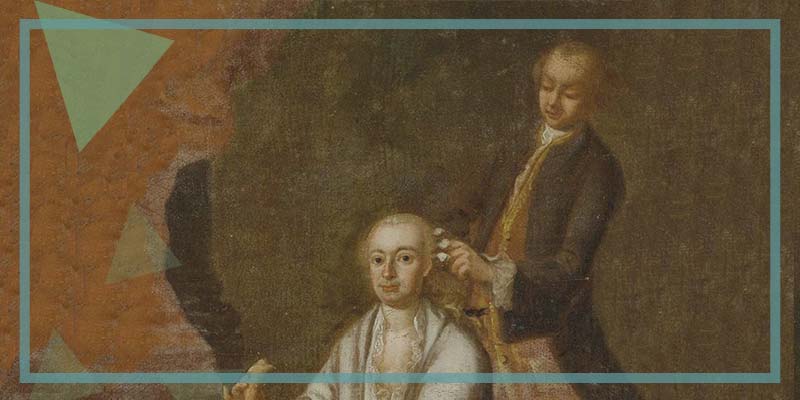Hair Transplantation From The Past To The Present
Like everything else, hair transplantation has a history. If you are interested in hair transplantation and the history of hair transplantation, this article will take you back in time and explain how hair transplant treatments have been used throughout history.
History of Hair Transplant
Hair transplantation as a science has evolved over time and has reached a level that can be described as perfect in terms of the results obtained with the techniques used today. The first attempts in this area were made in the 18th and 19th centuries, which marked the beginning of the history of hair transplantation as both human and animal hair.
In the 19th century, the hair surgical grafting method was applied to the scalp through a surgical procedure elsewhere. The use of free grafts dates back to the 19th century.
Earliest Known Transplant
The earliest evidence of a successful hair transplant was recorded in 1822 by a medical student and teacher in Würzburg, Germany. In this application, the hair was moved in a different area of the head. Although they viewed this as a success and wanted to help patients suffering from male baldness, very little has been mentioned about this procedure after some transplant experiments, at least about the history of hair transplantation until the 1900's.
J. Dieffenbach is the first doctor known in the history of hair transplantation with a successful transplant. The hair transplant treatments he worked on were different from today's hair transplant procedures. In his experiments, after experimenting with animal skins and feathers, he transferred part of his own hair to his arm. This is the first step in this area. This is considered a big step when looking at the history of hair transplantation.
One of the oldest hair transplantation on record and another important example of hair transplant history is the work of Menahem Hodara in 1897. The hair removed from unaffected areas of the scalp has been successfully transplanted onto bald scars.
Hair Transplant History in the 1930's
The 1930's are considered to be the beginning of modern hair transplantation. This period began in 1939 with a Japanese-born dermatologist Dr. Okuda developed procedures. We can also say that Dr. Okuda is the second household name when it comes to hair transplant history. In contrast to Dieffenbach with his primitive methods,
Dr. Okuda as the first to introduce the modern hair transplant procedure. In trying to find a solution for people who have a burned scalp and are unsuitable for hair growth, Dr. Okuda reveals his own method of puncture technique. But unfortunately, because of World War II, Okuda's method didn't get out of Japan until it was rediscovered in 2004.
Dr. Okuda is very important to the history of hair transplantation. After Okuda's hair transplant treatment, this special technique; It made treatment possible by removing parts of the skin that contained hair follicles and moving them into small holes in the damaged areas. After the skin grafts healed, they continued to produce hair in the previously bald areas of the scalp.
Hair Transplant History in the 1950's
In the early 1950s, Dr. Norman Orentreich, a New York dermatologist, performed the first hair transplant in the history of hair transplantation specifically designed to treat baldness and hair loss in men. However, Orentreich showed that the hair transplant is developed and permanent.
Although he had the most successful results in modern hair transplantation, Dr. Norman Orentreich uses 4 mm long hair follicles in his hair transplants so that no natural hair is created. This was one of the most common complaints with old hair transplantation techniques.
Hair Transplant History in the 1970's
Advances in hand motors and surgical devices have made it possible to place multiple and smaller (2-4 mm) circular cuts in a single slot.
History of Hair Transplant in the 1980's
In the 1980's, hair transplant methods replaced large grafts with a technique in which strands of hair larger than the resistant area were removed to create mini grafts (for fullness of hair) and micro grafts (for to form a thinner hairline). In the late 80's and early 90's, hair took on a more natural look thanks to the use of micro and mini grafts. The micrograft technique was used to soften the front hairline and the minigreft method was used for other regions.
Hair Transplant History in the 1990's
In the 1990's, the history of hair transplant changed significantly with the introduction of FUT (Follicular Unit Transplant) for the future of hair transplant. In this technique, the surgeon performing the hair transplant maximizes the cosmetic effect of the procedure by safely transplanting thousands of hair grafts in a single session. The use of large numbers of mini-microtransplants, a technique known as "mega-sessions", gained popularity in the mid-1990's.
The enlargement of hair transplant sessions can be seen as a logical extension of the mini micrografting technique as it basically requires the same skills as smaller sessions. Also, the problem with mini microtransplantation was that the graft sizes were not standardized and not similar to natural ones. In addition, the mini-microtransplant technique did not cut the skin between the follicular units in such a way as to create larger wounds on the larger recipient area and require graft growth.
The transplant of FUT (Follicular Unit Transplantation) was further developed with the first FUE operation in 2003. With FUE (Follicular Unit Extraction), individual hair follicles can be removed from the donor area and transplanted into the bald area. There are no complications with the FUE hair transplant technique. Because of this, this technique is now the preferred method of hair transplantation.
For more information of the FUE method, you can check out our content on the subject.
